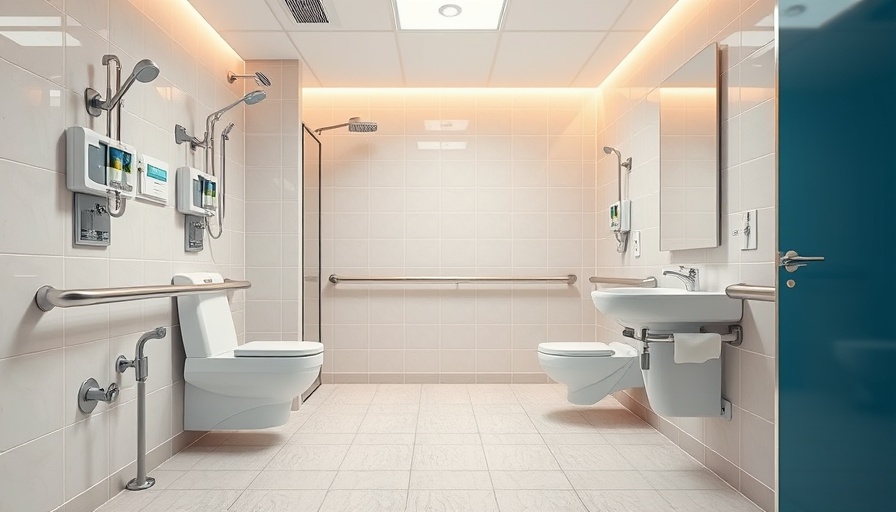
Transform Your Bathroom into a Safe Haven
Creating a safe and functional bathroom is not just a luxury; it's a vital necessity, especially for seniors, individuals recovering from injuries, and those with mobility challenges. Every year, thousands of adults experience accidental falls in the bathroom, making safety enhancements a top priority. By integrating Occupational Therapy (OT) strategies and practical tips into your bathroom design, you can ensure that your personal space remains functional and secure.
Assessing Your Bathroom: The Crucial First Step
The first step towards a safer bathroom is a thorough assessment. Walk through your bathroom as if you're experiencing it for the first time. Look for obstacles that might hinder movement or increase the risk of accidents—this could include slippery tiles, cluttered floors, or even poorly placed fixtures. Take special note of how easily you can access essential items like towels, toiletry products, and the toilet. By identifying these problem areas, you can implement changes that are both impactful and practical.
Essential Tools and Products for Enhanced Safety
Once you've conducted a comprehensive assessment, it’s time to explore tools and products that can elevate safety in your bathroom. Grab bars should be prioritized—these safety features offer extra support when entering or exiting the bath or shower. Look for models that are slip-resistant and securely anchored to your walls, providing stability where you need it most.
Alongside grab bars, consider the use of non-slip mats. These should be placed strategically inside the shower and under your sink to ensure basic stability while standing. For individuals with limited mobility, a shower bench can create a safer bathing experience, allowing you to sit comfortably while showering and significantly decreasing the risk of falls.
Optimize Your Bathroom Layout for Accessibility
Your bathroom's layout is as crucial as the products you choose. An organized space promotes accessibility and minimizes hazards. Ensure there’s enough room around fixtures for easy maneuverability, especially if you utilize mobility aids like walkers or wheelchairs. Aim for at least 32 inches of clear space in doorways to facilitate effortless entry and exit.
Additionally, consider repositioning mirrors and lighting. Mirrors should be at suitable heights for both sitting and standing positions. Proper lighting is essential too—install bright LED lights in shadowy areas to enhance visibility and make navigation easier.
Real-Life Stories: Inspiration from the Community
Let’s draw inspiration from real-life adaptations. One family in suburban Maryland transformed their daughter’s bathroom after she experienced mobility challenges following surgery. They installed grab bars, a comfortable shower seat, and used non-slip materials throughout, creating a space she could confidently use on her own. The family reported a significant improvement in her independence and mental well-being as she regained control over her personal space.
Future Trends in Bathroom Safety Enhancements
As technology continues to evolve, future trends in bathroom safety will likely feature even more innovative solutions. Some manufacturers are developing smart bathroom devices that alert caregivers when someone has fallen or requires assistance. This technology can offer peace of mind to both users and their families, ensuring that help is always just a touch away.
Final Thoughts: The Importance of a Safe Bathroom
Creating a safer bathroom is not just about enhancing aesthetics; it’s about increasing comfort, independence, and overall well-being. With thoughtful adjustments and the right tools, you can transform this essential space into a sanctuary of safety. Remember, safety doesn’t have to compromise style; the examples we’ve seen from the community showcase just that.
Call to Action: Begin Your Bathroom Transformation Today
Are you ready to create a safe haven in your home? Take the first step by assessing your bathroom layout and products today. Your safety and comfort are paramount, and small changes can lead to significant impacts. Don’t wait for an accident to occur—act now to ensure your bathroom is safe and comfortable for your needs!
 Add Row
Add Row  Add
Add 




Write A Comment